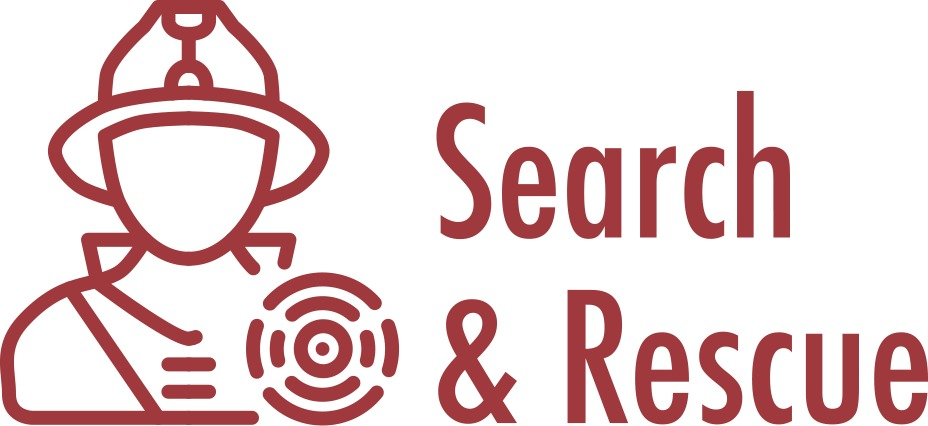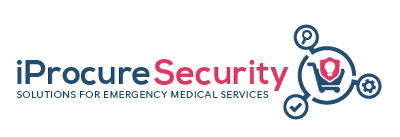76Projects
Help to improve our database
We are continuously collecting information related to the Emergency Medical Services in Europe. Help us improve our content and fill out the online form.
If you are not able to find what you are looking for, please let us know by sending us a message through our contact page.
Your feedback is important for us and it will be fed into our Database for EMS courses.
Open project form
Search and Rescue
- Funding: H2020
- From: 2020-07-01 to 2023-06-30
Description
After an earthquake, an industrial chemical release or a building’s collapse, a timely and effective response is crucial and can prevent or significantly reduce the risk of casualties. This is why first responders and rescue teams need to be equipped with cutting edge tools and specialised instruments in order to enhance their capabilities in terms of accuracy, quick localisation, and reduction of false alarms. Through a series of large-scale pilot scenarios, the EU-funded Search and Rescue project will design, implement and test a highly interoperable open architecture platform for first responders, including advanced frontend equipment systems and backend applications, improving the decision-making of first responders and providing a dynamic common operational picture of the crisis.

SECONDS
- Funding: FP7
- From: 2019-03-01 to 2019-06-30
Description
For Emergency Medical Services (EMS), late arrivals and long response times constitute losses in lives and higher hospitalization costs. 5 mins is the best response time to save more lives and 12 mins is the maximum threshold EMS estimate for an ambulance to be helpful. These times, however, are hard to meet (>50% emergencies do not even meet the latter).
SECONDS is an innovative, real-time vehicle management system for emergency dispatchers, maximizing coverage and reducing response time. It provides +35% ambulance arrivals below 12-min threshold time; it is able to manage simultaneous incidents in the same area; it forecasts locations with a higher emergency probability and provides predictive incident location, which means 25% less vehicle driving mileage, higher vehicle availability; faster patient delivery to hospital; less pollution. For EMS dispatch center operators, it will provide 2.5 faster response time, asset (vehicle + medical staff) usability management, reduced cost and crew overtime, as well as better decisions – less pressure on operators – and better monitoring. For citizens/persons in need, it will bring a higher survival rate (up to 14% mortality reduction) and richer experience – better care.

IN-PREP
- Funding: FP7
- From: 2017-09-01 to 2021-02-28
Description
European countries confront the rising specter of transboundary crises, which cross national borders as well as policy boundaries with speed and ease, threatening the continuing functioning of critical infrastructures and the well-being of many citizens. Transboundary crises pose a specific set of complex challenges for which Europe is – despite recent policy initiatives (e.g. Decision No 1313/2013/EU) – still ill prepared. IN-PREP will establish and demonstrate a next generation programme by enabling a reference implementation of coordination operations (Handbook of Transboundary Preparedness and Response Operations that synthesises the lessons learnt, recommendations, check-lists from past incidents) and a training platform (Mixed Reality Preparedness Platform a novel IT-based tool, which holistically integrates Information Systems (IS) and Situational Awareness (SA) modules over a decision support mechanism and the visualisation of assets and personnel) to the entirety of civil protection stakeholders (firefighting units, medical emergency services, police forces, civil protection units, control command centres, assessment experts) to meet these challenges.

Momentum
- Funding: FP7
- From: 2019-09-01 to 2020-08-31
Description
The goal of the project is the development of integrated medical technology, which can be used along the process chain to augment clinical and mobile pre-clinical use-cases such as the shock room, operating theatre, intensive care unit, and remote on-scene support in and around the ambulance. Networked medical technology and IT systems are integrated into a communication infrastructure across heterogeneous communication technologies to make their functionalities available via a shared infrastructure. State-of-the-art 5th generation mobile communications (5G) and their further development in public and private networks (in hospitals or on-site) can represent an essential component for continuous networking of medical technology. Medical resources, technologies and information from the hospital are accessible at the treatment site and collected patient data can be transmitted to the hospital.Due to the bilateral availability of clinical information at the scene of the accident, including preclinical data in the emergency room, patient treatment can be improved and made more efficient.

NOVEL INTEGRATED SOLUTION OF OPERATING A FLEET OF DRONES WITH MULTIPLE SYNCHRONIZED MISSIONS FOR DISASTER RESPONSES (RESPONDRONE)
- Funding: H2020
- From: 2019-05-01 to 2022-04-30
Description
RESPONDRONE will develop and validate an integrated solution for first responders to easily operate a fleet of drones with multiple synchronized missions to enhance their situation assessment capacity and own protection. This System of Systems will simplify and accelerate situation assessment and sharing, decision making and operations management, while requiring a small crew to operate it. Moreover, it will deliver high-level information to any involved control centre through an intelligent web-based system that can be operated and accessed from a remote site as well as serving as on-demand airborne communications network to allow people on the ground to communicate with the command centre in case of cellular coverage collapse.
With these situational-awareness enhancing tools, emergency response teams will be able to more rapidly, effectively and efficiently respond to an emergency or disaster and therefore save more lives. The fleet of drones will provide enhanced capabilities to support assessment missions, search and rescue operations, as well as forest fire fighting. The deployment will still be very simple. Each fleet or unit of drones will be able to be operated by a single pilot and few observers. To ensure seamless uptake and adaption by first responder organizations, RESPONDRONE will be fully integrated and embedded within the current processes and procedures of real emergency response agencies and teams, among others through advanced training programs. Therefore, RESPONDRONE will increase the effectiveness and efficiency of civil protection operations as it will consider the first responder total mission time, cost, and effectiveness (and not just considering the deployment time).
RESPONDRONE will be demonstrated through participation in actual civil protection exercises on Corsica, involving several agencies simultaneously.

ADAPTED SITUATION AWARENESS TOOLS AND TAILORED TRAINING SCENARIOS FOR INCREASING CAPABILITIES AND ENHANCING THE PROTECTION OF FIRST RESPONDERS (ASSISTANCE)
- Funding: H2020
- From: 2019-05-01 to 2022-04-30
Description
Mobilising a response in crisis situations is challenging. The EU-funded ASSISTANCE project will enable first response organisations to work cohesively, enhancing their capabilities through advanced training based on virtual reality, mixed reality and augmented reality. ASSISTANCE plans to adapt modules providing response centres with real-time video and resources locations for crew, including also accessible evacuation routes. All the ASSISTANCE results are due to be tested under controlled conditions in three different demonstration pilots. Solutions will be developed in compliance with EU societal values, fundamental rights and applicable legislation, that includes privacy and personal data protection.

Secured Collaboration Platform for Law Enforcement and First Responders (CoP1stRespond)
- Funding: FP7
- From: 2019-08-01 to 2020-01-01
Description
Security forces – from campus security and guarded communities to emergency responders and the military – face many challenges when dealing with emergency situations. One of these is reliable and secure communication. The EU-funded CoP1stRespond project aims to bring further into the market a solution developed by Globekeeper Tech. It has established a new communication platform that uses standard equipment but harnesses the most advanced encryption and exchange protocols in the industry. Integrating existing hardware like GPS devices and other Bluetooth-enabled hardware, users are able to stream videos and share important files. The technology can also support offline environments. The Europol law enforcement agency has already adopted this new technology.

EENA NG112 Project
- Funding: Other
- From: 2019-01-01 to 2020-05-31
Description
Launched at EENA’s Conference 2019 in Dubrovnik (Croatia) and running until May 2020, EENA’s project brought together a consortia of partners, to test and deploy the technical architecture enabling NG112 in different European countries, with a focus on demonstrating its use in real-life environments.

NIGHTINGALE
- Funding: FP7
- From: 2016-11-01 to 2021-04-30
Description
Safest, reliable, individualised care of patients at-risk of deterioration needs patients themselves to play an active role in their care whenever possible: late detection or escalation of deterioration causes avoidable harms, and deaths. This project will challenge industry to develop robust monitoring and communications systems that connect patients, carers and health professionals, provide early warning of acute deterioration in and out of hospital, and learn and adapt to different individuals in different situations. Wearable sensor technology allows dynamic monitoring of vital signs that indicate health status, while bidirectional video communication allows interaction with the patient and in depth assessment. Self-learning adaptive algorithms interfaced with Electronic Medical Records can provide reliable early warning with few false alarms; and data about individual responses to different therapies.

Medical Express
- Funding: H2020
- From: 2019-12-01 to 2021-11-30
Description
Delivering services with high quality in the most cost effective and efficient manner in healthcare hinges on patient flow. This refers to the ability to manage patients effectively and with minimal delays. Improving patient flow into, within and out of hospitals is necessary to maximise operational efficiency – a top priority. The EU-funded Medical Express project will develop a modular platform that can integrate easily into existing IT structures and electronic health records. Using artificial intelligence (AI) technology, this B2B solution for healthcare providers facilitates data analysis, reporting and decision-making. Already tested in Sweden’s primary care sector, general practitioners reported a 50 % increase in the number of patients per day with this AI-guided solution.

